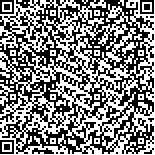孙亚,金敏敏,李岩,傅建明,杨美霞,张玮涛,朱碧华.上肢机器人辅助训练对恢复期脑卒中患者肩关节本体感觉的影响[J].中华物理医学与康复杂志,2017,39(11):806-810
扫码阅读全文

|
| 上肢机器人辅助训练对恢复期脑卒中患者肩关节本体感觉的影响 |
| Robot-assisted upper limb therapy improves shoulder joint proprioception after stroke |
| |
| DOI: |
| 中文关键词: 脑卒中 上肢 机器人 肩关节 本体感觉 |
| 英文关键词: Stroke Upper limbs Robots Shoulders Proprioception |
| 基金项目:浙江省卫生厅医药卫生一般研究计划(2014KYA212);浙江省嘉兴市科技局科技计划项目(2016BY28025) |
|
| 摘要点击次数: 6025 |
| 全文下载次数: 6928 |
| 中文摘要: |
| 目的 探讨上肢机器人辅助训练对恢复期脑卒中患者肩关节本体感觉的影响。 方法 采用随机数字表法将40例恢复期脑卒中患者分为实验组及对照组,每组20例。2组患者均给予常规药物治疗及康复干预,康复干预包括运动训练、作业治疗及物理因子治疗等;实验组患者在此基础上辅以上肢机器人训练,每次训练持续20min,每周训练6次,共连续训练8周。于治疗前、治疗4周、8周后分别采用MJS上肢本体感觉测试系统评估2组患者上肢平均轨迹误差值(ATE)及测试执行时间(Time),通过等速测试仪评定患者肩关节内旋、外旋30°、60°时关节位置觉。 结果 治疗前两组患者ATE及Time值组间差异均无统计学意义(P>0.05)。治疗4周后两组患者ATE及Time值均较治疗前明显改善(P<0.05);并且实验组上述指标亦显著优于对照组(P<0.05)。治疗8周后两组患者ATE及Time值均较治疗4周时进一步改善(P<0.05);并且实验组上述指标亦显著优于对照组(P<0.05)。治疗前两组患者肩关节内旋、外旋30°、60°主动运动角度与参考角度相关性值组间差异均无统计学意义(P>0.05)。治疗4周后两组患者主动运动角度与参考角度相关性值均较治疗前明显改善(P<0.05);并且实验组上述指标亦显著优于对照组(P<0.05)。治疗8周后两组患者主动运动角度与参考角度相关性值均较治疗4周时进一步改善(P<0.05);并且实验组上述指标亦显著优于对照组(P<0.05)。 结论 上肢机器人辅助训练可促进恢复期脑卒中患者肩关节本体感觉功能恢复,该疗法值得临床推广、应用。 |
| 英文摘要: |
| Objective To explore the effect of robot-assisted therapy on the shoulder joint proprioception of convalescent stroke survivors. Methods Forty stroke survivors were enrolled and randomized into an experimental group (n=20) and a control group (n=20). Both groups received routine drug treatment and rehabilitation, including the traditional kinesitherapy, occupational therapy and physical therapy, but the experimental group was additionally provided with 20 minutes of robot-assisted upper limb therapy 6 times a week for 8 weeks. Before the intervention and at 4 and 8 weeks the multi-joint system (MJS) upper limb proprioception test system was used to evaluate the average trace error and test execution time of the upper limb. Shoulder joint proprioception was measured at 30° and 60° in intorsion and extorsion using an isokinetic dynamometer. Results Before the training there were no significant differences between the two groups in terms of any of the assessments. After 4 and 8 weeks of training, significant improvement was observed in the measurements, and those of the experimental group were significantly better than those of the control group at the same time points. Conclusion Robot-assisted therapy can facilitate the recovery of shoulder joint proprioception after a stroke. It is worthy of application in clinical practice. |
|
查看全文
查看/发表评论 下载PDF阅读器 |
| 关闭 |